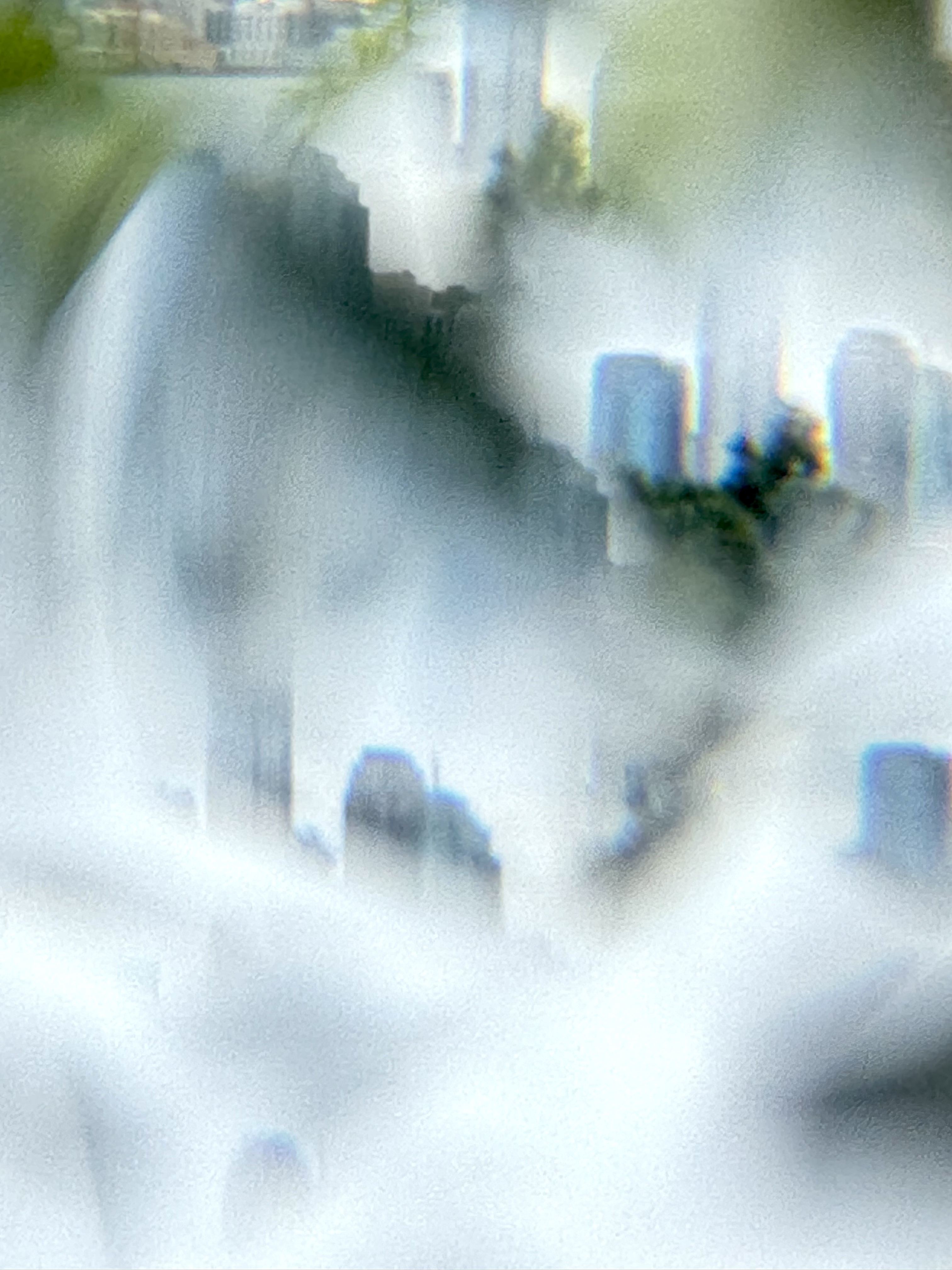Writing about my Photos
Photography almost always fails to preserve the perceived beauty of reality to its fullest, so I hope the contents below could at least offer some more insights to the moments I've perceived.
Jersey City Through Crystalline Lens

This otherworldly image of Jersey City was taken in summer 2024 as I walked past a wall by the Hudson River embedded with crystal polyhedra. The polyhedron was generally spherical in shape, but its surface was cut into little pieces of triangular tiles, and those edges enabled light to travel in unfamiliar paths. Note how the same buildings along the skyline partially recur in the image, appearing distorted around the crystal edges as the trees in the vicissitude melt into emerald silhouettes. Snell's law of refraction could well-account for such behavior, though a modelling for this particular structure may be difficult. As light waves propagate through a substance of different density, its wavelength and direction of propagation change. The angle of refraction depends only upon the angle of incidence and the substance's refractive index, which is an intrinsic constant. According to Snell's law, the inverse of the ratio of refractive indices matches the ratio of the sine of respective angles, hence predicting a curious trend: when light exits a substance of higher refractive index with a large-enough incident angle, the refracted angle may be nonexistent, resulting in a phenomenon known as total internal reflection where all light gets sent back by reflection. For our crystal ball, light from the distant buildings may enter through the rear end of the crystal, get refracted, and bounce within the ball several times (due to TIR) before exiting and getting refracted again.